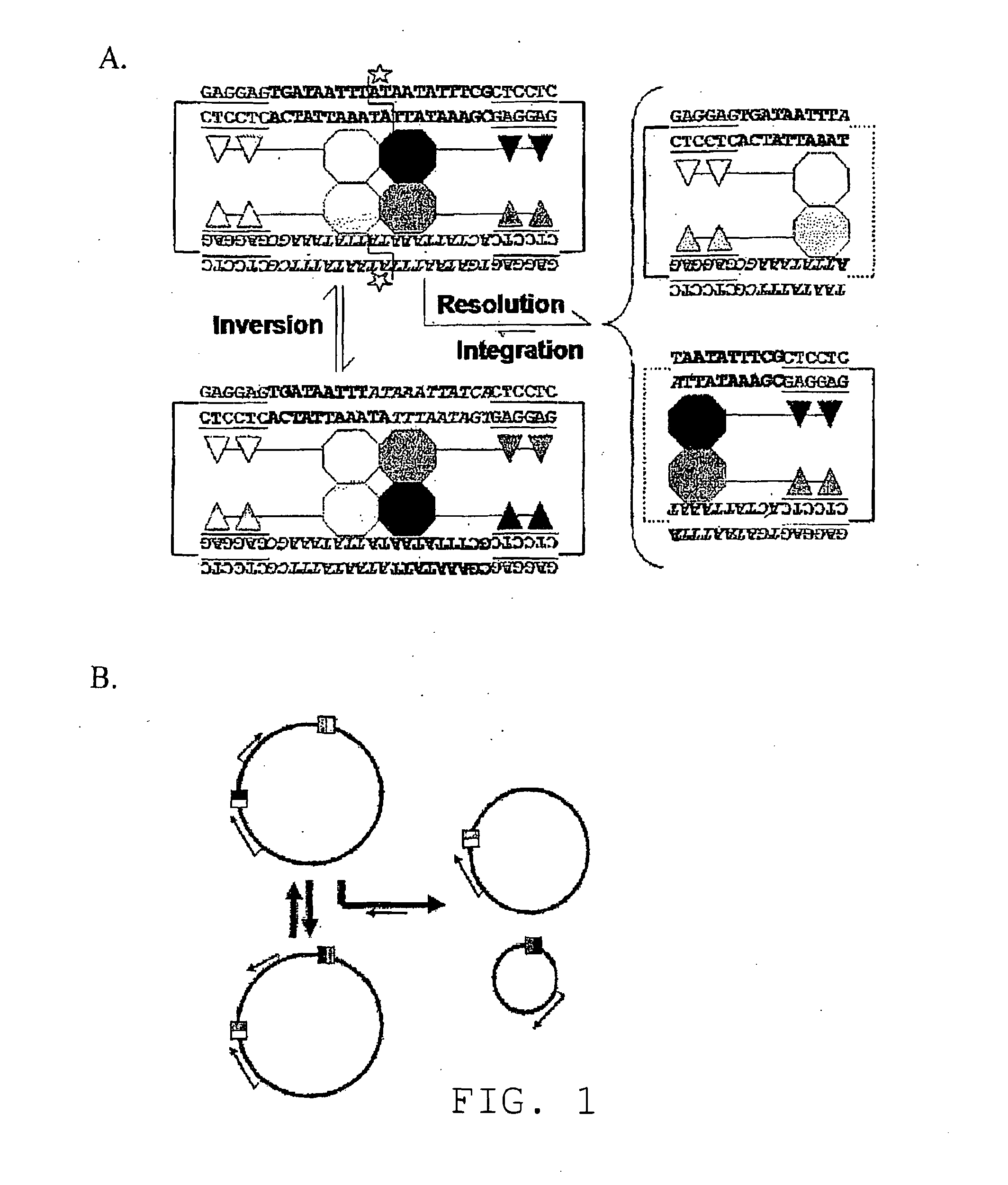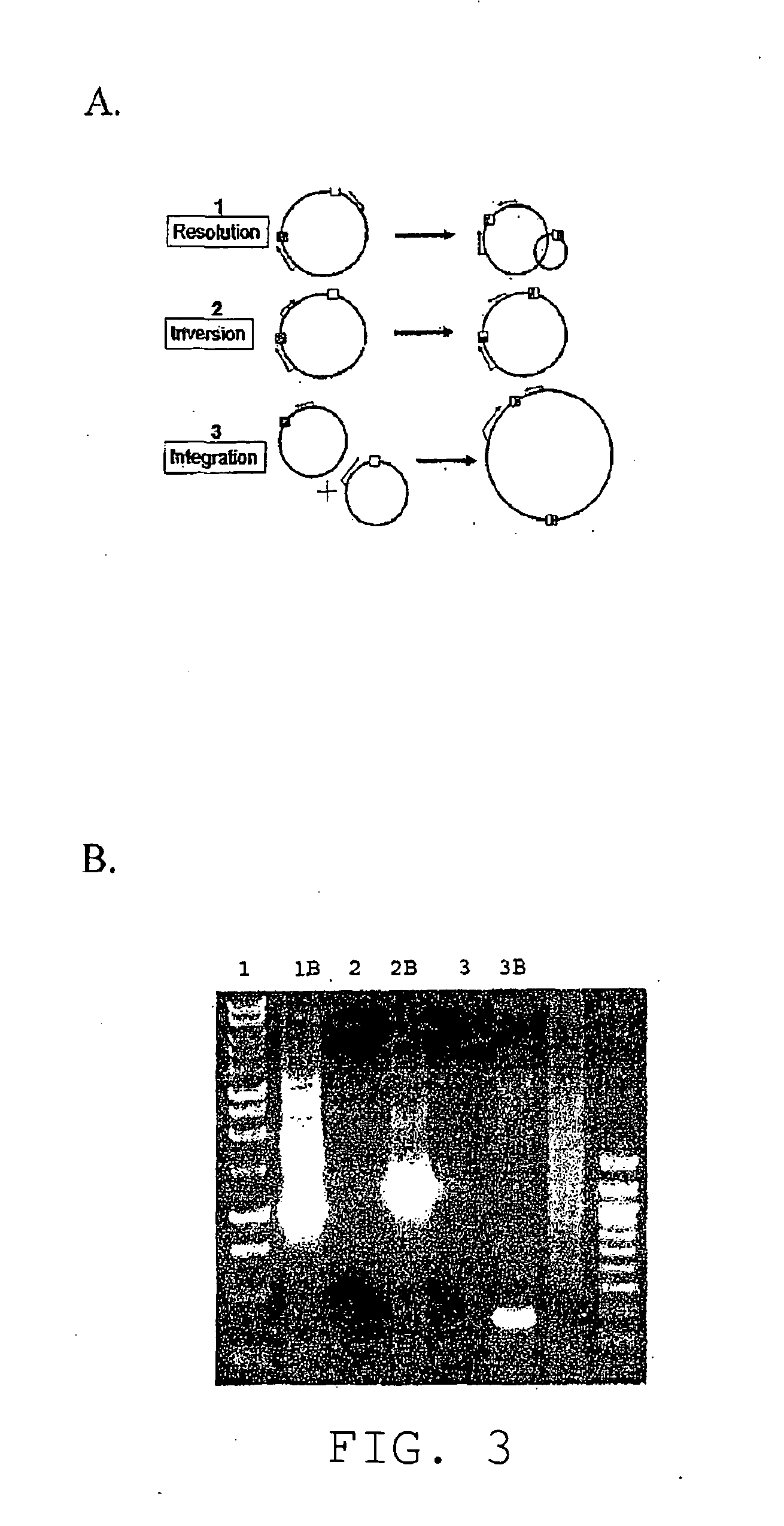Chimeric zinc finger recombinases optimized for catalysis by directed evolution
- Summary
- Abstract
- Description
- Claims
- Application Information
AI Technical Summary
Benefits of technology
Problems solved by technology
Method used
Image
Examples
example 1
Construction, Analysis, and Activity of Chimeric Zinc Finger Recombinases
[0460]Site-specific recombinases, including Cre-lox, Flp-FRT, and φC31-att, enable researchers to manipulate chromosomal DNA with high fidelity in vitro and in vivo. Once recombination sites have been introduced into endogenous loci by homologous recombination, site-specific recombinases (SSRs) may catalyze excision, inversion, or integration. This two step methodology for endogenous genome modification has revolutionized forward and reverse genetics. When SSRs are selectively activated in vivo, the resulting conditional knockouts can reveal a gene's function with exquisite spatial and temporal specificity.
[0461]In contrast to the commonly used tyrosine recombinases (Cre and Flp) and large serine integrases (φC31), members of the resolvase / invertase family of serine recombinases are modular in both form and function. Once dimers have bound at the sites of recombination, every subsequent step—including tetrameri...
PUM
| Property | Measurement | Unit |
|---|---|---|
| Fraction | aaaaa | aaaaa |
| Fraction | aaaaa | aaaaa |
| Time | aaaaa | aaaaa |
Abstract
Description
Claims
Application Information
 Login to View More
Login to View More - R&D
- Intellectual Property
- Life Sciences
- Materials
- Tech Scout
- Unparalleled Data Quality
- Higher Quality Content
- 60% Fewer Hallucinations
Browse by: Latest US Patents, China's latest patents, Technical Efficacy Thesaurus, Application Domain, Technology Topic, Popular Technical Reports.
© 2025 PatSnap. All rights reserved.Legal|Privacy policy|Modern Slavery Act Transparency Statement|Sitemap|About US| Contact US: help@patsnap.com



